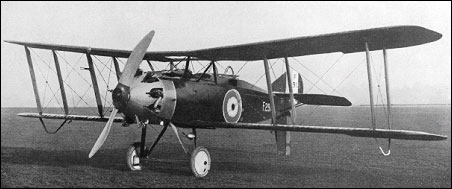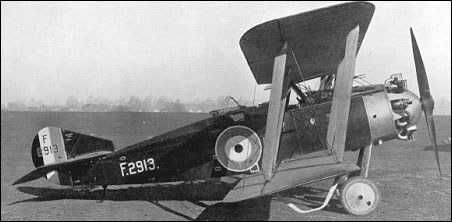|
| In April 1918, Westland gained a three-prototype contract for a two-seat fighter-reconnaissance aircraft that was designed to provide a successor to the Bristol F.2b fighter. In configuration, the new fighter, to which the name Weasel was given, closely resembled a scaled-up Wagtail. The pilot was located beneath the trailing edge of the upper wing, with the observer/ gunner close behind, with a single 7.7mm Lewis gun on a Scarff ring. Two fixed and synchronised forward-firing Vickers guns of the same calibre were provided for the pilot. The Weasel had a two-spar wooden wing and a wire-braced wooden fuselage, with fabric covering for all but the ply-covered front fuselage. In common with the competing Austin Greyhound and Bristol Badger, the Weasel was powered by the 320hp ABC Dragonfly nine-cylinder air-cooled radial engine, which (like the ABC Wasp in the Wagtail) proved so unsatisfactory as to rule out any possibility of production, even if the ending of World War I had not removed the urgency from the requirement. Flight testing did not begin until November 1918 and a Weasel went to Martlesham Heath in April the following year, followed by the third prototype in November. Subsequently, two of the Weasels were used for engine development at the RAE Farnborough, one being re-engined with a 385hp Cosmos Jupiter II nine-cylinder radial and the other with a 350hp Armstrong Siddeley Jaguar II 14-cylinder radial. A Jupiter II was also used to power a fourth Weasel, which was ordered in August 1919 and delivered in 1920 with full armament, although also used primarily for engine development.
| MODEL | Westland Weasel (Dragonfly eng |
| WEIGHTS |
| Take-off weight | 1393 kg | 3071 lb |
| Empty weight | 847 kg | 1867 lb |
| DIMENSIONS |
| Wingspan | 10.82 m | 36 ft 6 in |
| Length | 7.56 m | 25 ft 10 in |
| Height | 3.07 m | 10 ft 1 in |
| Wing area | 34.19 m2 | 368.02 sq ft |
| PERFORMANCE |
| Max. speed | 210 km/h | 130 mph |
| Ceiling | 6310 m | 20700 ft |
 | A three-view drawing (600 x 420) |
| jack, 20.06.2011 13:19 Armstrong Siddeley Jaguar II 14-cylinder radial. A Jupiter II was also used to power a fourth Weasel, which was ordered in August 1919 and delivered in 1920 with full armament, although also used primarily for engine development. reply |
|
Do you have any comments?
|
| 
COMPANY
PROFILE
All the World's Rotorcraft
|








